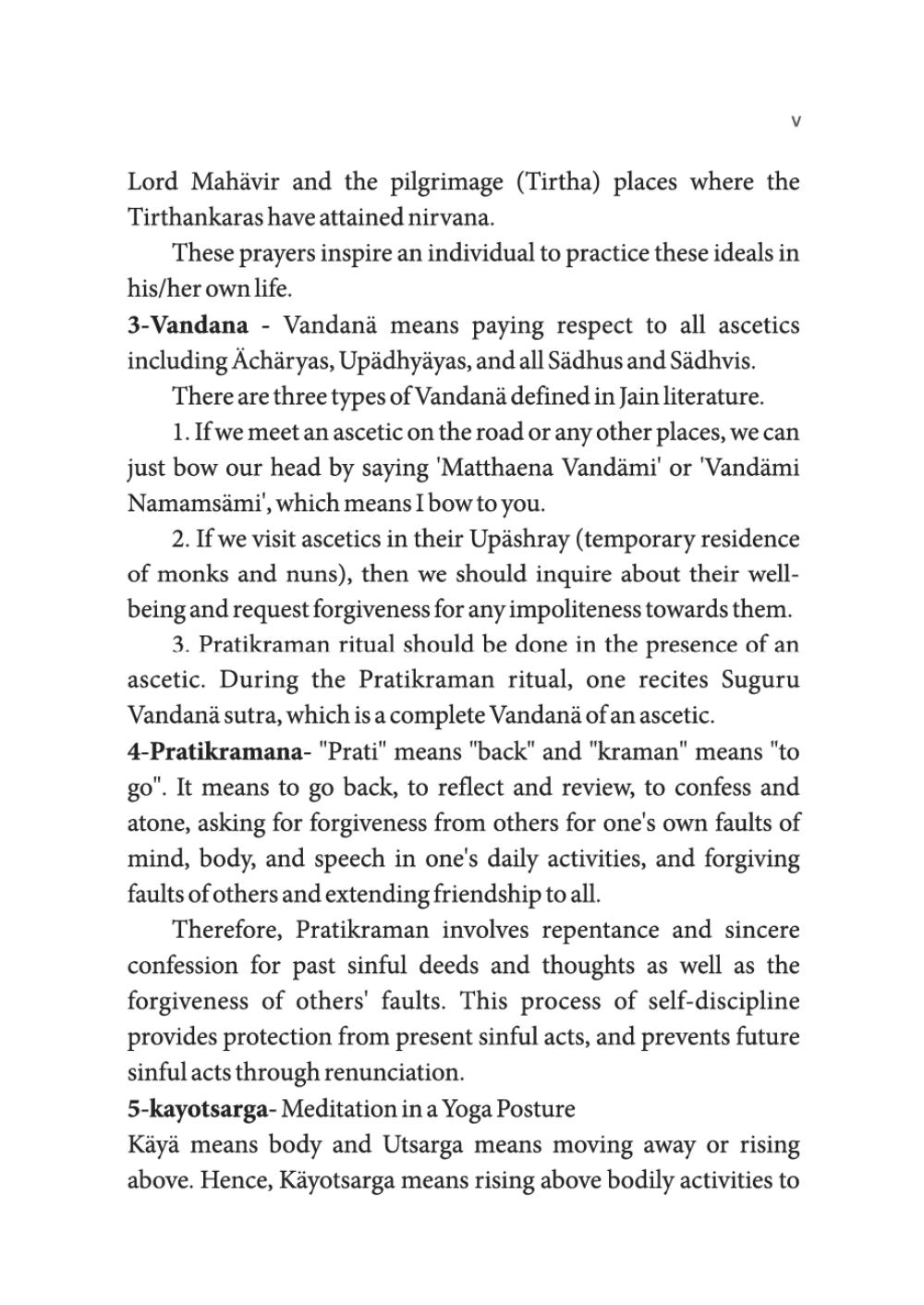________________
Lord Mahävir and the pilgrimage (Tirtha) places where the Tirthankaras have attained nirvana.
These prayers inspire an individual to practice these ideals in his/her own life. 3-Vandana - Vandanä means paying respect to all ascetics including Ächäryas, Upadhyayas, and all Sädhus and Sadhvis.
There are three types of Vandanä defined in Jain literature.
1. If we meet an ascetic on the road or any other places, we can just bow our head by saying 'Matthaena Vandämi' or 'Vandämi Namamsämi', which means I bow to you.
2. If we visit ascetics in their Upäshray (temporary residence of monks and nuns), then we should inquire about their wellbeing and request forgiveness for any impoliteness towards them.
3. Pratikraman ritual should be done in the presence of an ascetic. During the Pratikraman ritual, one recites Suguru Vandanä sutra, which is a complete Vandanä of an ascetic. 4-Pratikramana- "Prati" means "back" and "kraman" means "to go". It means to go back, to reflect and review, to confess and atone, asking for forgiveness from others for one's own faults of mind, body, and speech in one's daily activities, and forgiving faults of others and extending friendship to all.
Therefore, Pratikraman involves repentance and sincere confession for past sinful deeds and thoughts as well as the forgiveness of others' faults. This process of self-discipline provides protection from present sinful acts, and prevents future sinful acts through renunciation. 5-kayotsarga-Meditation in a Yoga Posture Käyä means body and Utsarga means moving away or rising above. Hence, Käyotsarga means rising above bodily activities to




